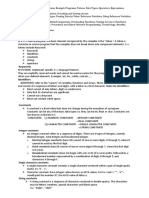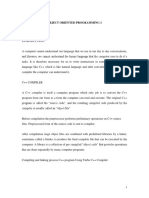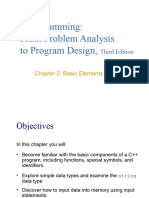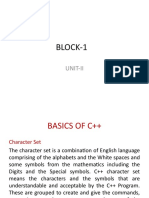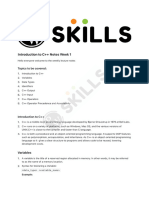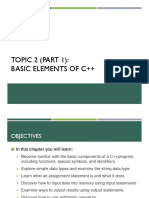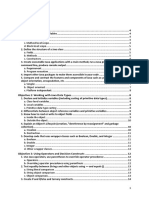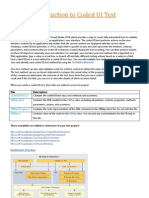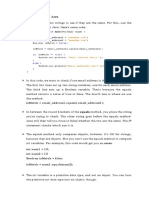0% found this document useful (0 votes)
11 views13 pagesIPC Lecture 2
The document provides an overview of C++ language primitives and datatypes, detailing the character set, types of variables, constants, assignment operators, and arithmetic, relational, and logic operators. It explains the significance of escape sequences and includes a class activity for writing a C++ program that calculates a person's age based on input data. Key datatypes such as bool, char, int, float, double, and string are also described along with their sizes and purposes.
Uploaded by
naeothatoCopyright
© © All Rights Reserved
We take content rights seriously. If you suspect this is your content, claim it here.
Available Formats
Download as PDF, TXT or read online on Scribd
0% found this document useful (0 votes)
11 views13 pagesIPC Lecture 2
The document provides an overview of C++ language primitives and datatypes, detailing the character set, types of variables, constants, assignment operators, and arithmetic, relational, and logic operators. It explains the significance of escape sequences and includes a class activity for writing a C++ program that calculates a person's age based on input data. Key datatypes such as bool, char, int, float, double, and string are also described along with their sizes and purposes.
Uploaded by
naeothatoCopyright
© © All Rights Reserved
We take content rights seriously. If you suspect this is your content, claim it here.
Available Formats
Download as PDF, TXT or read online on Scribd
/ 13



